American Soldiers
American Soldiers
Ground Combat in the
World Wars, Korea, and Vietnam
Peter S. Kindsvatter
Foreword by Russell F. Weigley
 University Press of Kansas
University Press of Kansas
2003 by the University Press of Kansas
All rights reserved
Published by the University Press of Kansas (Lawrence, Kansas 66045), which was organized by the Kansas Board of Regents and is operated and funded by Emporia State University, Fort Hays State University, Kansas State University, Pittsburg State University, the University of Kansas, and Wichita State University
Library of Congress Cataloging-in-Publication Data
Kindsvatter, Peter S.
American soldiers : ground combat in the World Wars, Korea, and Vietnam / Peter S. Kindsvatter; foreward by Russell F. Weigley.
p. cm. (Modern war studies)
Includes bibliographical references (p. ) and index.
ISBN 978-0-7006-1416-6 (pbk. : alk. paper)
ISBN 978-0-7006-2659-5 (ebook)
1. CombatHistory20th century. 2. United States. Army. InfantryHistory20th century. 3. United States. Marine CorpsHistory20th century. I. Title. II. Series.
UA28 .K55 2003
355'.00973'0904dc21
2002012957
British Library Cataloguing in Publication Data is available.
Printed in the United States of America
10 9 8 7 6 5 4 3 2 1
The paper used in the print publication meets the minimum requirements of the American National Standard for Permanence of Paper for Printed Library Materials Z39.48-1984.
Contents
Foreword
John Keegan introduced his classic study of the experience of combat, The Face of Battle, with the lament that no military historian had hitherto succeeded in conveying that experience realistically. Just what it felt like to place yourself in the way of numerous deadly missiles, blade strokes and bayonet thrusts, and clubbing weapons of various kinds and to persist in moving forward into the storm had, he believed, eluded previous historians. Keegan set out to offer a corrective, and he did so impressively, keeping sight of the simple, central point, amid a good deal of complex exposition, that the dominant emotion and experience in battle is to be scared.
Notwithstanding the classic stature of Keegans book, there is an element of the self-serving in his introductory remarks about how writers before him had failed to get matters right regarding combat. Disappointed by that apparent attitude, I myself initially put The Face of Battle aside. It required insistent friends to persuade me to pick it up again, conquer my distaste for what proved to be a small part of it, and discover that on the whole it is a great book. Putting aside, however, the self-satisfaction of Keegans contrasting his own work with other historians accounts of the nature of combat, his position is not without merit. It is exceedingly difficult to capture in writing the chaos of events and emotions that occur in combat. All descriptions of the climactic events of war dilute them.
A great virtue of the present volume by Peter Kindsvatter is that, by reading and passing on to us his findings in an extraordinary number of American soldiers narratives of combat during the four major conscript-army wars of the twentieth century, he has identified a surprisingly large number of writers who have in some measure overcome this difficulty and who actually tell us what it is to be in battle. He presents generous samplings of such writings within his own interpretive analysis to create a major addition to that slim body of literature that does convey a sense of the reality of battle. Kindsvatters book is based firmly on the firsthand accounts of combat written by twentieth-century American soldiers and marines of the World Wars, Korea, and Vietnam. Its author acts as a sensitive, skillful mediator between the writers and us.
One of the merits of John Keegans The Face of Battle is that Keegan provides so much insight into the social history of the British soldiers with whom he is concerned because he knows that without understanding whence the soldiers came the reader will not be able to comprehend properly how they behaved in combat. Similarly, Peter Kindsvatter leads up to the combat experience with detailed examinations of his writers accounts of the entire process of living in the armed forces, from induction through basic and advanced training. Through the soldiers writings he sympathetically explores their ambivalent relationships with their families and friends back home to whom they knew they could not adequately communicate what they experienced, and their less ambivalent, more often hostile attitudes toward the rear echelons of men who wore military uniforms but did not share the trials at the cutting edge.
Yet it is experiencing combat and how men could enter and endure it with which Kindsvatter is principally concerned. Similar issues of why men were able to enter the hell of combat and why they stuck to it have been addressed recently for the American Civil War by James M. McPherson in For Cause and Comrades. As his title implies, McPherson found that the writings of Civil War soldiers indicate that they fought first for ideological reasonsfor their cause and countryand secondarily for their comradesfor motives having to do with the bonding of friends and with unit solidarity. Kindsvatter finds the same scale of motivational values among his twentieth-century soldiers, which will cause some of us to rethink accustomed beliefs. We have had a tendency, drawn from impressionistic and insufficient evidence, to believe that the more worldly wise soldiers of the century just ended were more likely than the romantic rustics of the Victorian era to fight simply and cynically just to get an unpleasant job over with. Kindsvatter shows that combat motivation remained rooted in the same kind of ideological, patriotic, and comradeship values in twentieth-century American mass armies as in our first mass army, even if less sentimentally expressed.
Kindsvatter has used more self-consciously literary sources than McPherson; where the latter relied mainly on unpublished letters and diaries, Kindsvatter has drawn from published fiction, memoirs, and histories by combat veterans. Fiction and nonfiction have been of nearly equal value for his purposes, but if there is an edge, fictionalized memories of combat seem to come a bit closer to presenting a cogent version of the experience of battle. Perhaps feeling obliged to adhere to what can be confirmed as the literal truth interferes with capturing a fuller truth, even in memoirs, let alone in the work of historians, thus reaffirming the degree of accuracy within John Keegans complaint about military historians who preceded him.
We can hope that by introducing these literary sourcesthat approach about as closely as words are able toward conveying what it is like to be part of warKindsvatter will bring us all to a better appreciation of that uniquely intense experience. We can hope, too, that Kindsvatter will succeed in sending his readers to examine the best of his sources for themselves. Perhaps a better comprehension of the realities of war will help us stay away from warlike policies, but I do not intend this Foreword to convey any such simpleminded antiwar message, nor is that by any means the purpose of Kindsvatters book. Through the book, however, we learn that those soldiers who approached combat informed by the best literary descriptions of it, though they could not fully be prepared for what they were enteringnothing could accomplish thatwere at least more ready than those who came only with romantic images from the movies. If we are to continue to engage in combat, as we will, even that slight advantage for those new to it might make them better soldiers. More than that, it surely must be of some value for policymakers and for those who vote for policymakers to possess a modicum of understanding of what war is. Peter Kindsvatter gives us more than that modicum.


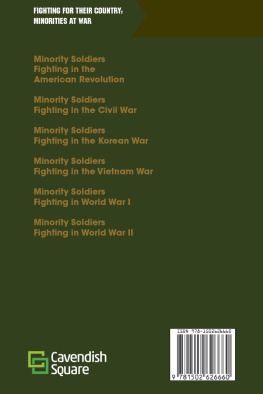
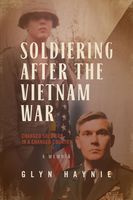
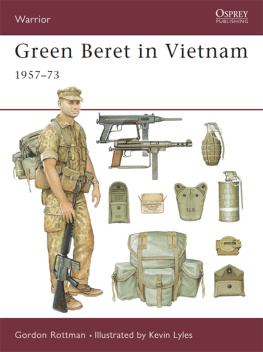

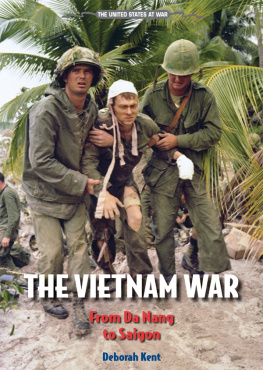
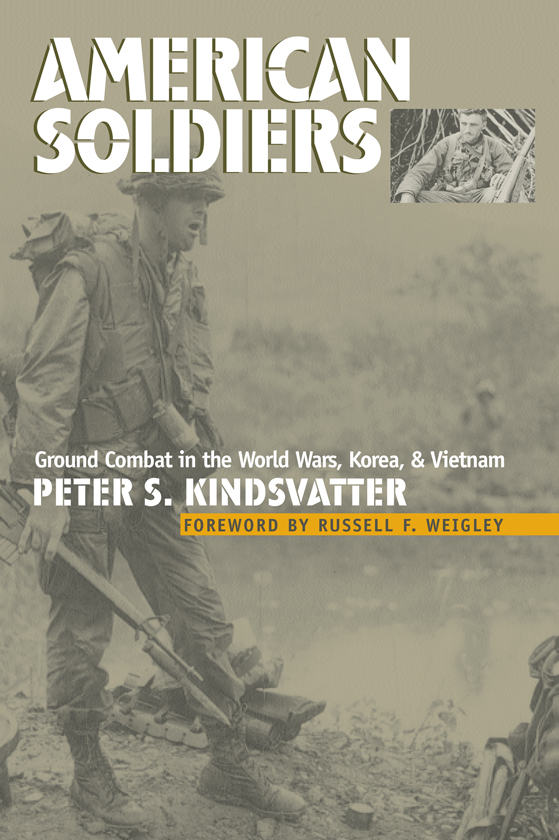
 University Press of Kansas
University Press of Kansas